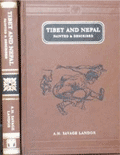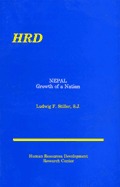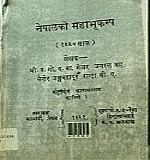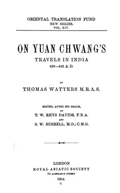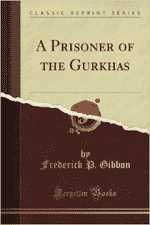
A. Henry Savage Landor, Tibet and Nepal (London: A. & C. Black Soho Square, 1905)
The book Tibet and Nepal by Arnold Henry Savage Landor (1865 – 26 December 1924) is the story of his adventures to these forbidden lands. As a painter, explorer, writer and anthropologist, born in Florence, Landor liked the Himalayas and its vicinity in Nepal and Tibet. It is his love of the Himalayas that provoked him to recount his adventures in this book.
In 1897 Landor, a British national, starts out on his travels to explore Tibet. The exploration was not without challenge. He was captured. He suffered terrible adversities and tortures there. Nevertheless, he discovered the sources of the Indus and the Brahmaputra rivers. After being away for next two years, he returned to Tibet a second time and then to Nepal. His return to the beautiful mountains and the Himalayan region led to the publication of two new books: In the Forbidden Land (1898) and Tibet and Nepal (1905). The first book was the account of his journey in Tibet, where he was captured by the Tibetan authorities, which followed with imprisonment, torture and ultimate release. It was published by William Heinemann London. The theme of the second book Tibet and Nepal respectively came seven years later. But the most of it is about Tibet than Nepal. Nevertheless, it is an interesting book, and at the time it was published, it was a treasure of information about the lands which were not much known to the western world.
Arnold Henry Savage Landor set off from Bombay, the sea port, to the Kathgodam by rail with his blankets, survey instruments, cameras, and hundreds of plates, provisions, and painting materials. From there, he traveled by trail to the hill station of Almora in the North-West provinces, which he again made his starting point as in the first journey. He took some local porters and guides and a Tibetan pony with him. Contrary to the usual custom of British mountaineering expeditions those days, he avoided taking Swiss Alpine guides as his company. Narrating his experience, Landor noted: “Mountaineering, by any one in full possession of all the senses, is a delightful amusement, and possibly the pleasantest, healthiest, and most instructive exercise in existence.”
From Almora to the Tibetan frontier, Arnold Henry Savage Landor followed, to a great extent, a different route from the one he had taken on his first journey, as he wanted to visit en route the interesting shrine of Debi Dhura at 6630 ft. The shrine housed Mahadeva, Varahi Devi and Bhimsen. After leaving this place, he walked towards the summit of the ‘granitic’ range which the trail followed all along, amidst country thickly wooded with oaks, rhododendrons, pines and deodarus. Further away toward Tibet, Landor remarks: “I had heard most peculiar rumours from the natives that the Tibetans had come in great force on to British territory at Garbyang, and with great pomp and much beating of drums were proclaiming that the British government were afraid of coming to Tibet, and that the entire Bias and Chaudas had now been called to Tibet.” A spy that Landor had sent over to Taklakot reported back to him that great commotion reigned there. Bridges had been hastily destroyed, stone barriers were put up, whole warlike preparations of all kinds were carried on in feverish speed. “A bluffing message was sent over by the Tibetans to inform the Political Agent that 5000 men were ready to meet [his] force and capture [him] again, when they would cut off [his] head and throw [his] body into the river – a threat which was by no means new to [him].
During his visit, Arnold Henry Savage Landor claims to have climbed 23,490 ft Nampa (now Api) summit and explored western Nepal as well. Seventy five remarkable colors and black and white illustrations painted by the author during his adventures are included in the book, each with titled tissue guards. There are yellow Lamas with prayer wheels, a typical native of North-Western Nepal, the Elfrida Landor Glacier of Nepal, the Tinker Pass in the border of Nepal and Tibet, a Tibetan spy in the disguise of a beggar approaching the author’s camp, a Tibetan woman of a commoner class, Tibetan dogs, the sacrifice of a yak, and goats carrying loads of borax. His paintings of the mountain peaks, the people, the customs, the everyday life, and the animals are beautiful and more telling than any photograph. He has written about his impressions and painted his objects without any hitch. At one point, he even goes on to say: “I well knew the contemptible cowardice of the Tibetans, and I took but little notice of these threats.” He depicts Tibetans as religious savages. This type of typical remark about the enemy, who seems to be uncompromising, is not rare in the British writings on Nepal as well. His account is for obvious reasons less than objective in some places in the book.
Arnold Henry Savage Landor’s annoyance about the Nepalese border security guard who warned him not to cross over into the forbidden Nepalese territory (“you cannot travel on Nepalese territory. It is forbidden to foreigners, and I have orders to stop you”) also finds a place in the book. He seems to be generally exaggerating when he says: “Pounding with big rocks and by the aid of a wooden lever we got the door [of the fort] loosened, and while the garrison’s attention was directed to prevent our entering that way, four of my best men and I climbed over the wall on the opposite side of the fort and covered the defenders with our rifles. I demanded that they should lay down their weapons or I would shoot.” The guard, unable to fight out the strangers, as Landor has contended, followed them for some days, and always at a most respectable distance – until they got high up among the snows and glaciers.
The book of Landor has many references on western Nepal. Although he has many remarks on the places he never visited, and had very few objective studies on, there are other interesting observations as well. He writes about sparse population and mixed people in the Western hills of Nepal. He also notes of seeing cross-breeds of Shokas and Nepalese, which seemed to produce most striking heads in Nepal Himalayas. The Western zone, according to Landor, is inhabited by non-Gurkha tribes, such as the Doteli and Jumli, as well as the wilder tribes, such as the Chepangs and Kusundas. Then there are other minor Hinduised tribes generally known as Parbatiyas (or hill men). The Brahmins in his opinion are “not so strict in the observance of prejudices” as one would see in India. He points out that the Nepalese women are not unattractive. However, Landor describes the Tharus in the Terai as “a poor, sickly-looking race.”
In the opinion of Arnold Henry Savage Landor, the form of Buddhism practiced in Nepal closely resembles that of Tibet. “Superstitions are rampant, both among Brahmins and Buddhists, and of course even more so among the wilder tribes.” There are some mistaken information as well. One passing example is his finding that the body of the deceased among Brahmins is buried and not cremated, while several others, however, cremate their dead. The reverse is closer to the truth. In any case, the perspective of Landor is always attention-grabbing. It is a book that anybody interested in Tibet and Nepal will enjoy reading.
